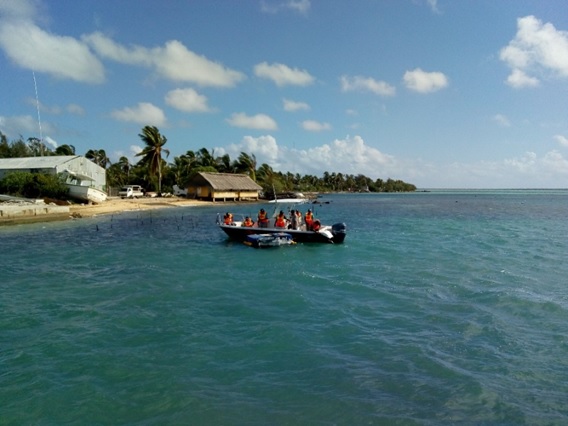Before COVID-19, fisheries were a source of income for up to 50 percent of households, and provided up to 90 percent of animal protein consumed in Pacific Island countries. With COVID-19 causing loss of employment in urban areas, the dependence on coastal fisheries is likely to increase.
The Ministry worked closely with the Pacific Community (SPC), the region’s leading science and technical agency, to fund activities that provide direct support to national fisheries agencies. Beginning in 2017, this five-year activity was aimed at strengthening coastal fisheries policies and laws, and building capacity for monitoring, control, surveillance (MCS) and enforcement to support the implementation of these management tools. The tools enable Pacific Island countries to maximise the social and economic benefits from their fisheries.

The Pacific REEFLex data base was launched in 2019, providing a searchable database containing fisheries laws and policies of 22 countries to strengthen legal frameworks in the region.
Forty-three students were trained in Coastal Fisheries and Aquaculture Compliance at the University of the South Pacific, with the aim of improving MSC capabilities and the effective implementation of coastal fisheries policies.
The Ministry also supported SPC to work with governments and small business owners on the development of sustainable aquaculture, recognised as a potential alternative food supply and source of income. This support focused on improving aquatic biosecurity standards, enhancing business acumen of enterprises, and increasing the uptake of improved aquaculture practices. Species of particular importance to the region include both finfish such as tilapia, as well as high-value species for export and sale such as shrimp and pearls. There was a focus on increasing female participation in fisheries, including participation at capacity development workshops and business development for female-owned enterprises.
A Pacific Regional Framework on Aquatic Biosecurity was produced and launched in 2020 to reduce biosecurity risks, better maintain healthy organisms, and protect aquatic environments.
As COVID-19 travel restrictions have impacted the region, SPC and MFAT worked to continue to support Pacific governments, fisheries agencies and farmers through virtual formats, including remote legal drafting support and online workshops.
To build on achievements so far and support Pacific COVID-19 recovery, the Ministry is currently designing a second phase of five-year support for coastal fisheries and aquaculture in the Pacific to begin in mid-2021.

